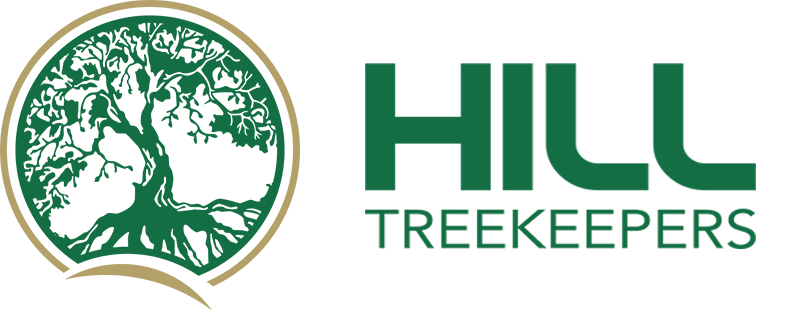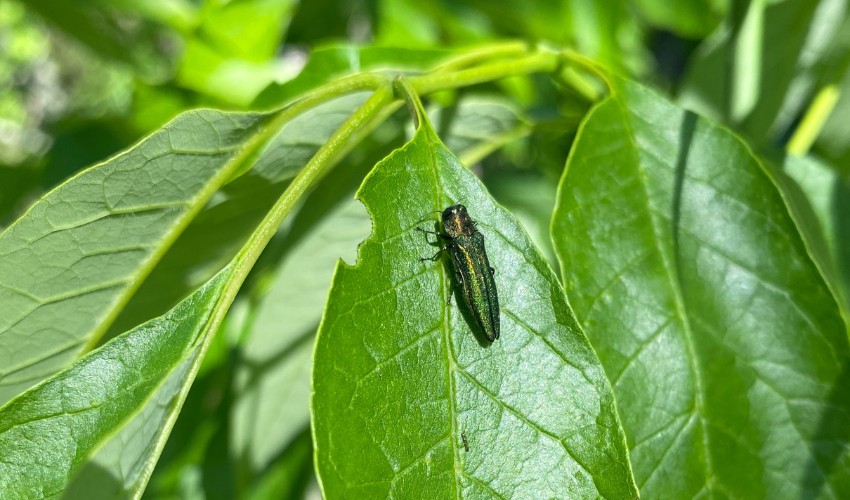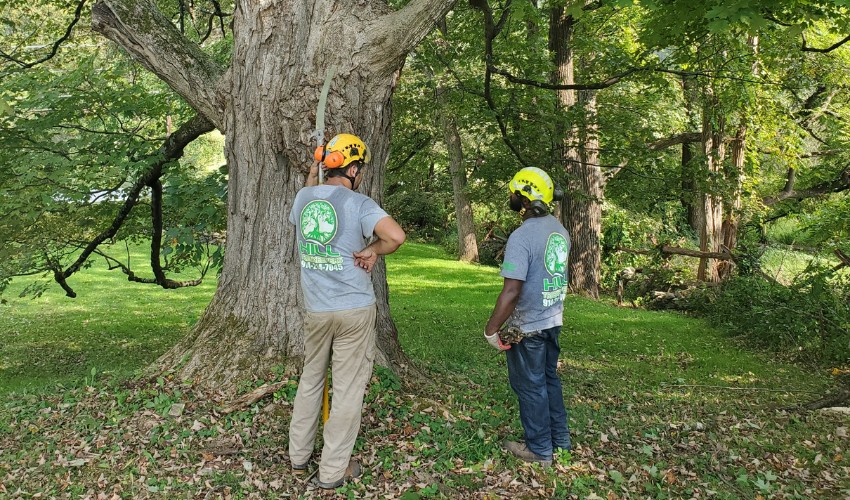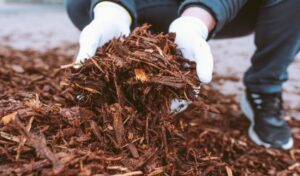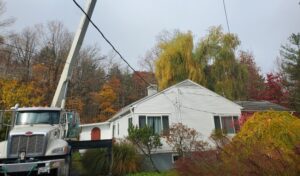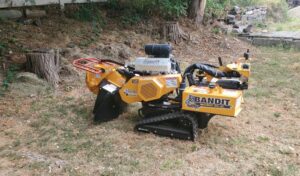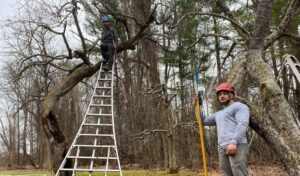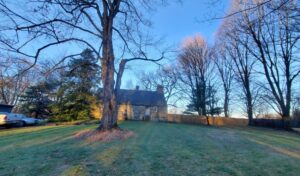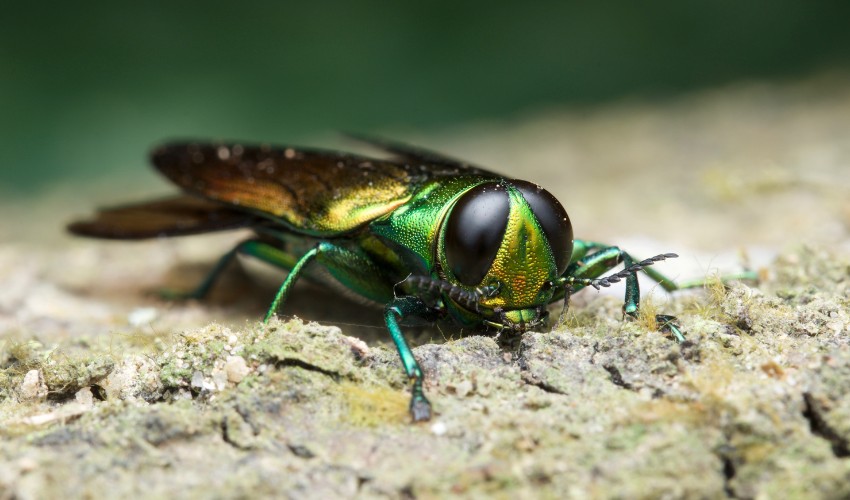
While emerald ash borer is a familiar threat, many don’t realize the extent of its devastation to our local ecosystem and economy. Learn more about the impacts of emerald ash borer in the Hudson Valley and what you can do to protect the remaining trees.
Key Takeaways:
- Since its arrival between 2010 and 2012, the emerald ash borer has devastated ash trees throughout the Hudson Valley, with Ulster County experiencing over 95% mortality.
- The loss of ash trees has significant ecological impacts, including harm to wildlife dependent on them and decreased biodiversity in forest ecosystems.
- Economic impacts of EAB include property value loss, damage to the timber industry, reduced firewood supply, and property destruction from brittle dead trees falling.
- Local municipalities have responded with public education and proactive tree removal; researchers are working on developing EAB-resistant varieties.
- Homeowners can help by inventorying ash trees on their property, considering preventive treatments like trunk injections, or planning for proactive removal and replacement with different species.
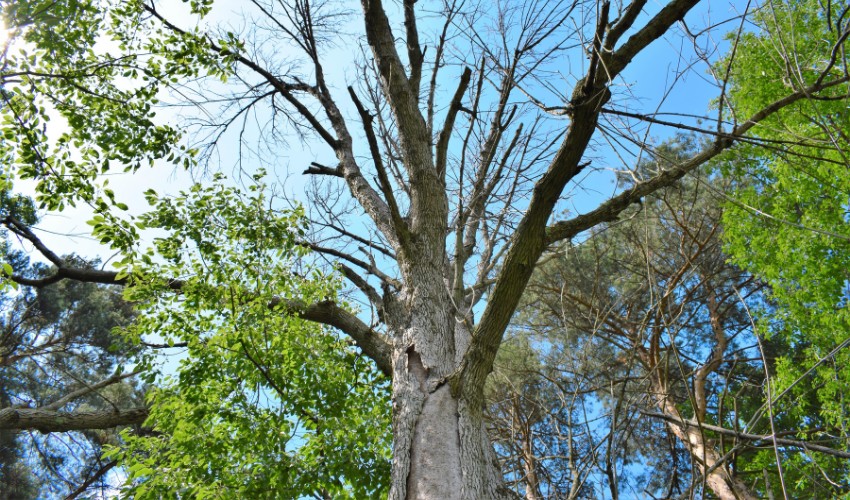
Emerald ash borer leaves ash trees dead within a matter of years.
The State of Ash Trees in the Hudson Valley
The Hudson Valley was one of the first areas of New York to deal with emerald ash borer (EAB). The pest likely first moved into our area sometime between 2010 and 2012.
Since initial detection, EAB has spread throughout the region, killing countless ash trees. In Ulster County, the damage has been the most extreme, with an ash tree mortality rate over 95 percent.
Other parts of the Hudson Valley, like Orange and Dutchess counties, have also experienced extensive tree loss, though more specimens remain in the southern part of our area.
PRO TIP: EAB isn’t the only tree insect we have to deal with in the Hudson Valley. Learn more about some of the common pests with our previous articles on:
Ecological Impacts of Emerald Ash Borer in the Hudson Valley
Ashes were one of the most common trees in New York before the introduction of EAB into our ecosystem. The loss of ash trees in forests will have several negative repercussions for our ecosystem, including:
- Harming Wildlife: Ash trees provide food and shelter for many species of mammals and insects. Without ashes in our area, wildlife will die out or migrate to other parts of the country that can support them.
- Decreasing Biodiversity: A variety of species is vital for a healthy forest and urban tree canopies. As more ash trees die, invasive and aggressive species may try to fill the void, strangling out biodiversity and leading to further ecological struggles.
Economic Impacts of EAB
EAB and the loss of ash trees doesn’t just affect the ecosystem – it has also had a profound impact on the economy of the Hudson Valley and the rest of the country (estimates in 2020 suggested at least $12.5 billion) for homeowners and business owners. Some of the economic impacts are:
- Loss of Property Value: Healthy and aesthetically pleasing shade trees add value to your property. Ashes were once a great investment for homeowners due to their quick growing time and distinctive look. Removing dead ash trees has cost homeowners money to remove the tree and lowered their equity.
- Damage to the Timber Industry: Ash trees have been an important part of the timber industry, as their wood is strong, light, and perfect for building. Timber professionals have had to pivot to using other species.
- Lower Supply of Ash for Firewood: Ash used to be a popular species for firewood. The lack of these trees has cost local firewood companies money and forced them to find other wood sources.
- Destruction of Property: EAB-killed ash trees are notoriously brittle and prone to breaking. They have damaged nearby structures and homes when homeowners do not promptly remove them.
The Future and What to Do About EAB
Despite these challenges, both local governments and homeowners can take action to address the EAB problem.
How Hudson Valley Towns Have Responded to EAB
Since the first detection of EAB in our area in 2010, many local municipalities have worked to educate the public and come up with a plan to deal with it. Municipalities like Poughkeepsie and Kingston have encouraged the community to be aware of their ash trees and the problems facing them.
Many local governments have decided to proactively remove any ash trees before they become a hazard.
Development of New Ash Species
As the population continues to decline, researchers have begun work to try and develop a new species of ash tree. Scientists hope that researching ash genes will help in creating these resistant varieties and allow us to enjoy ashes again.
How Homeowners Can Help
Though our ash population has significantly dwindled in the Hudson Valley, many homeowners still have a few trees that EAB hasn’t killed yet. Some actions we recommend taking include:
- Take an Inventory: You (or preferably an arborist) should examine your trees and determine any ashes on your property. Once you identify them, thoroughly and regularly inspect them for signs of EAB infestation.
- Schedule Preventive Treatments: Trunk injections of insecticides can increase your tree’s resistance to emerald ash borer. These treatments are typically effective for two years before you need an arborist to repeat the process. We recommend the process for any mature ash trees you don’t want to lose.
- Remove and Replace: Removing an ash tree near your home can improve safety. Ash trees infested with Emerald Ash Borer (EAB) can pose a growing risk, and you may not notice the infestation until it’s too late. If you remove the tree, replace it with a species better suited to our climate, one that’s naturally resistant to insects and diseases.
Frequently Asked Questions About Emerald Ash Borer
EAB and ash trees have long been a concern for homeowners in the Hudson Valley, so we’ve compiled some common questions to arm you with knowledge on how to fight the pest.
How can I identify an ash tree on my property?
Some of the distinguishing features of ashes include:
- Opposite leaf pattern with stems and buds directly across from one another
- Compound leaves that feature anywhere from 5-11 leaflets
- Seeds that look like paddles
- Diamond shape bark for green ash
What are the typical signs of an EAB infestation in my trees?
Common symptoms of EAB presence in your trees include:
- Canopy dieback
- D-shaped exit holes that are the size of a grain of rice
- Increased woodpecker activity
If my neighbor’s trees have EAB, will mine get it?
Yes, it is possible that EAB from a neighbor’s tree will colonize your tree eventually. Adults can fly between ¼ and ½ mile in search of a new host. If your neighbor’s ashes have an infestation, any of your untreated specimens will likely end up dealing with EAB within a few years.
What should I do with the wood from a removed ash tree?
Many homeowners choose to use the wood from an ash tree as firewood after removal. While these logs are perfect for burning, do not move the firewood far from where you cut it. You may accidentally transport EAB larvae to another location and infect other ash trees.
Trust Hill Treekeepers to Treat EAB and Remove Ash Trees
With the damage EAB has done to the Hudson Valley’s ecosystem and economy, protecting the ash trees we have remaining is more vital than ever. To protect the Hudson Valley from further harm, talk with an arborist who understands our region and can recommend whether to treat or remove your tree.
The team at Hill Treekeepers employs experts in tree care who understand ash trees and what’s best for them. We’ll provide you with an objective recommendation of what to do for your ashes. Call us today at 914-214-7045 or request a quote online.
Share this online!
Get the highest quality of tree services for residential and commercial properties in the Hudson Valley area. We look forward to working with you!
TOPICS
Recent Articles
Don't Miss the Next Update!
Join the thousands of smart Hudson Valley residents who get the monthly newsletter from Hill Treekeepers. It's full of helpful information you won't want to miss!
